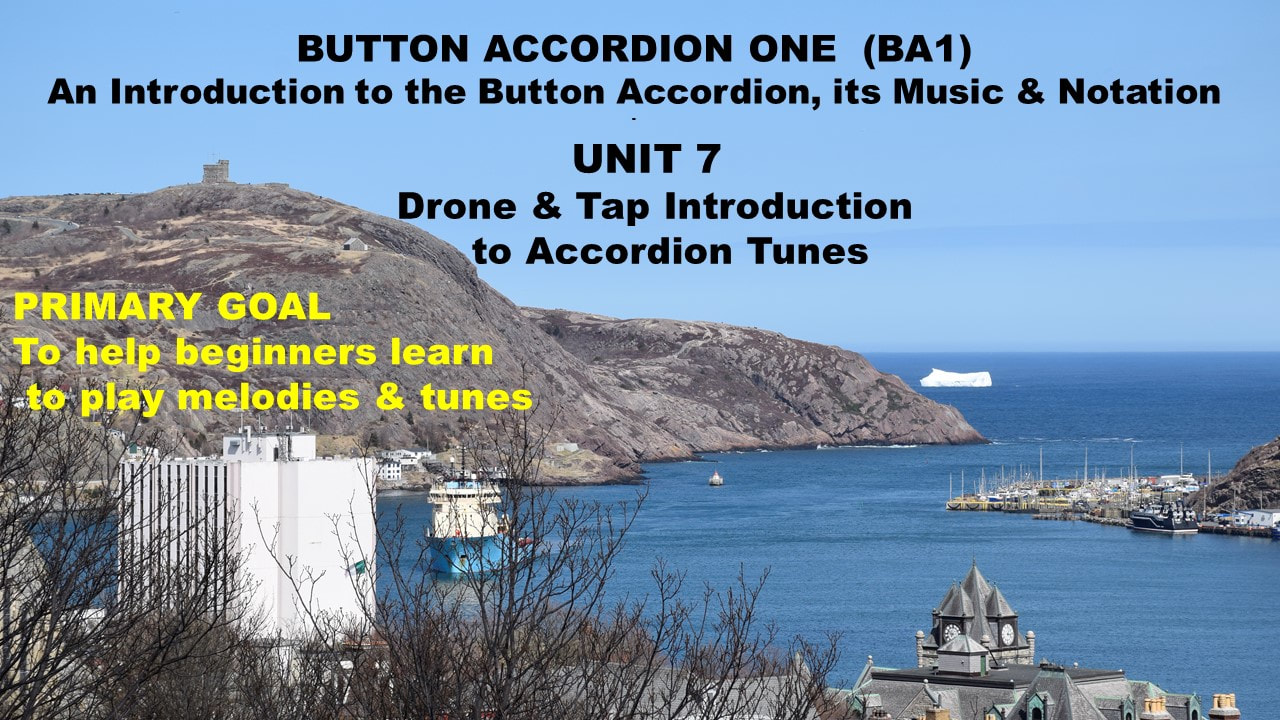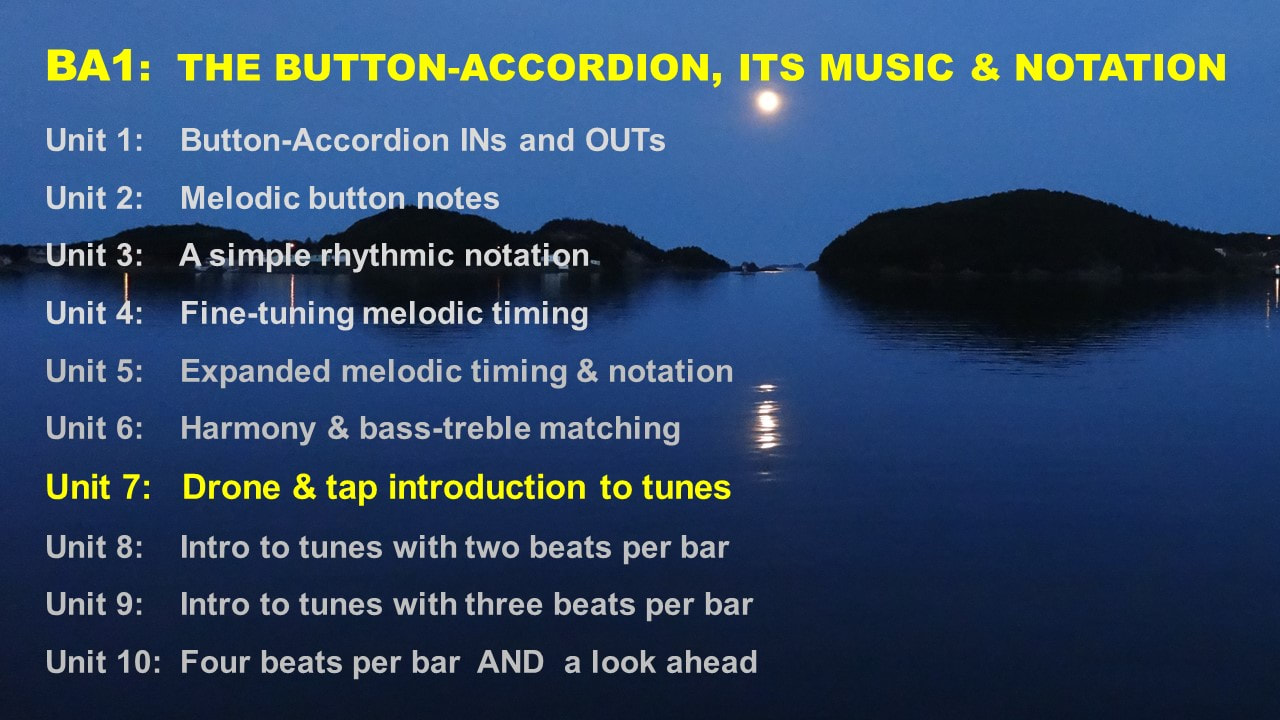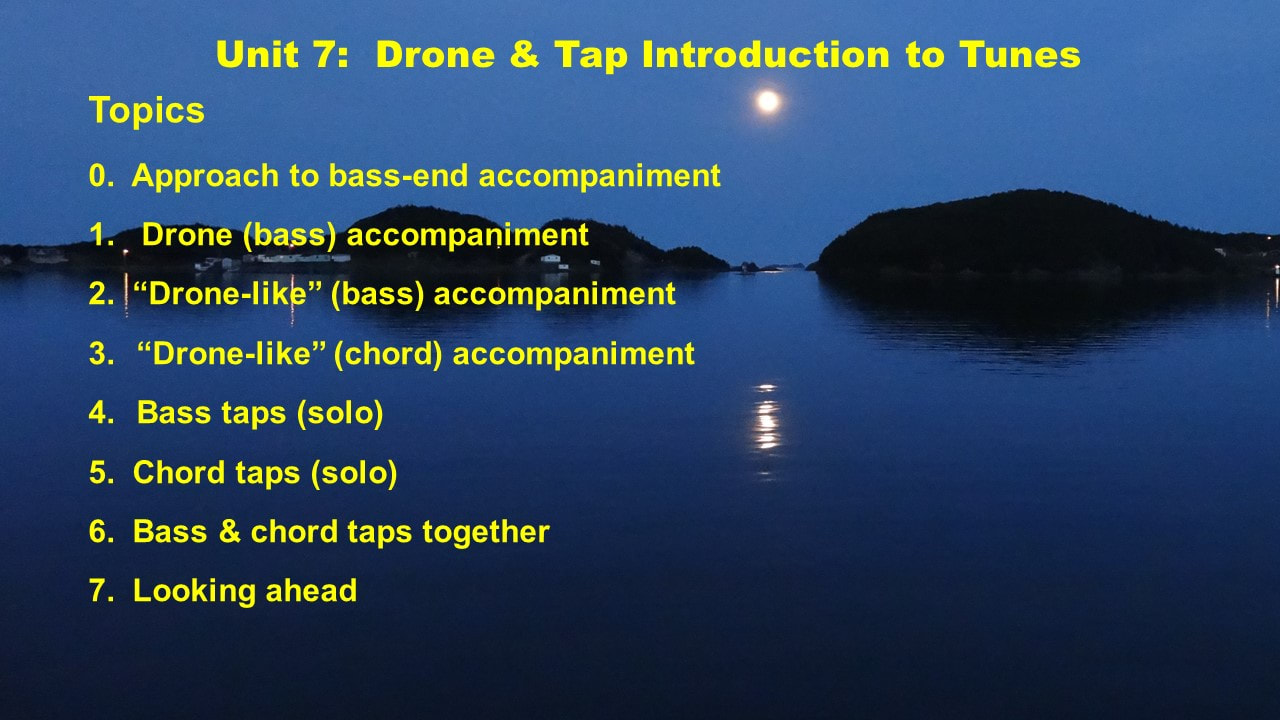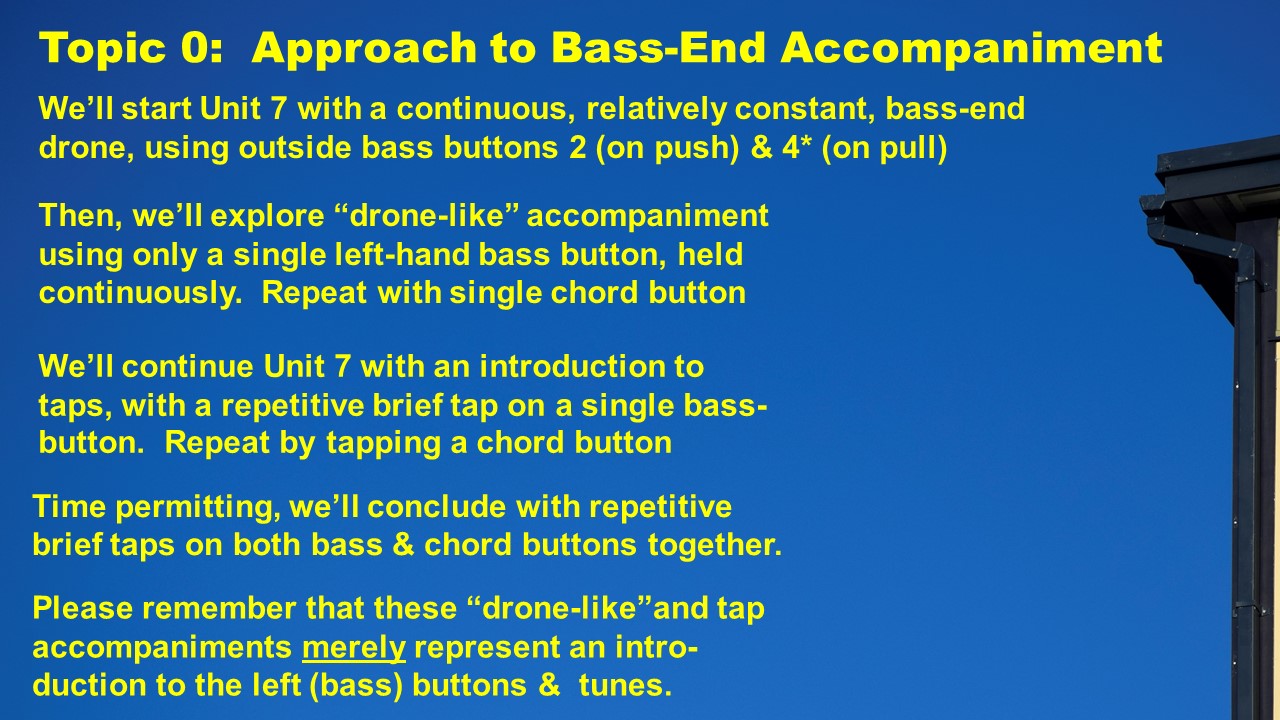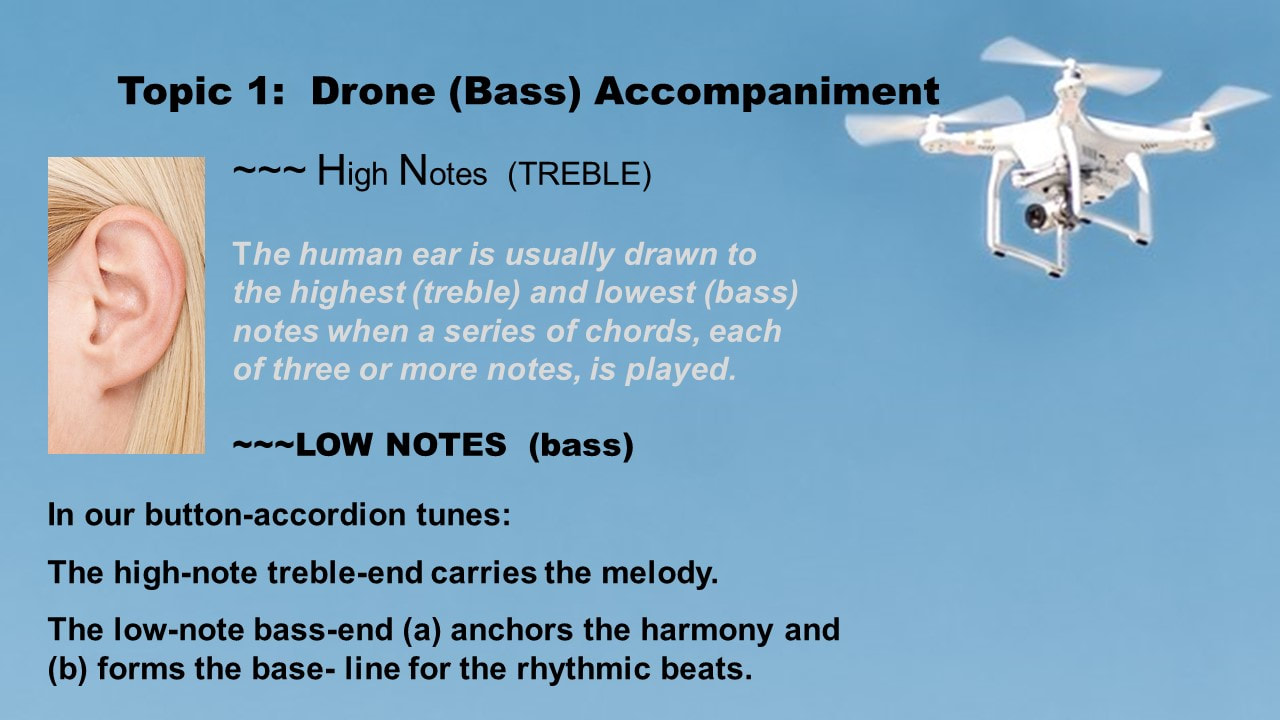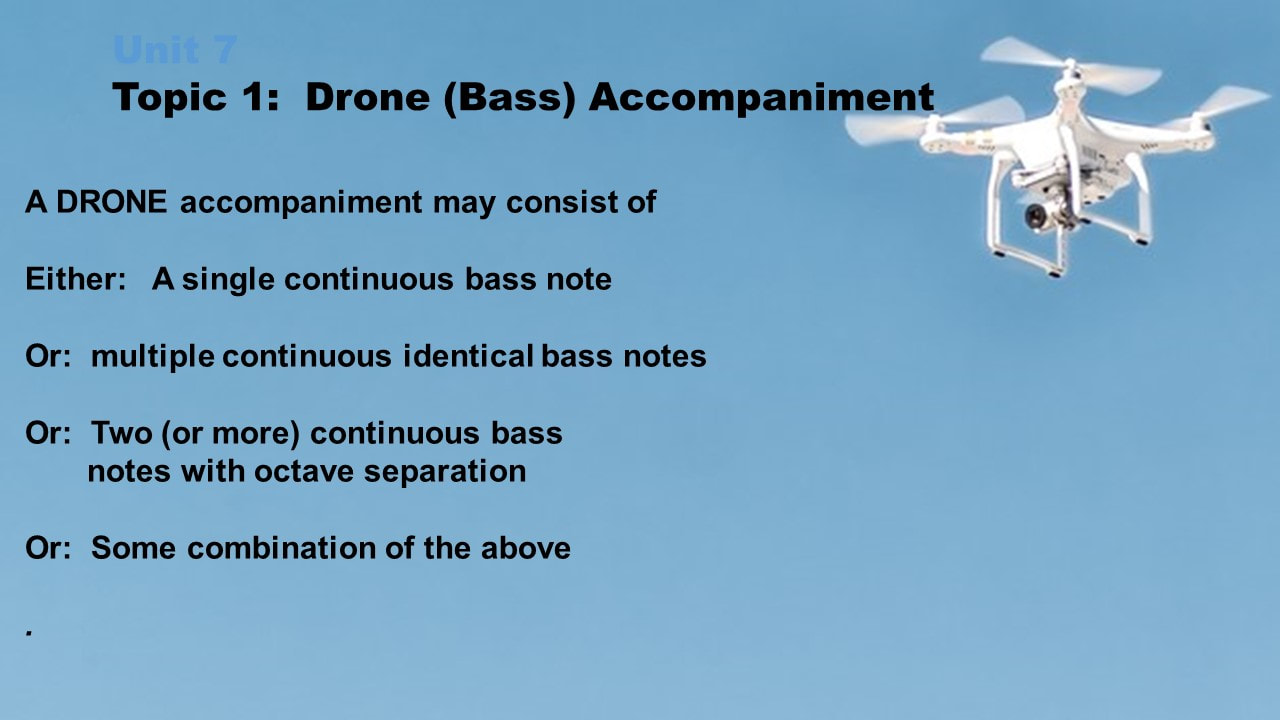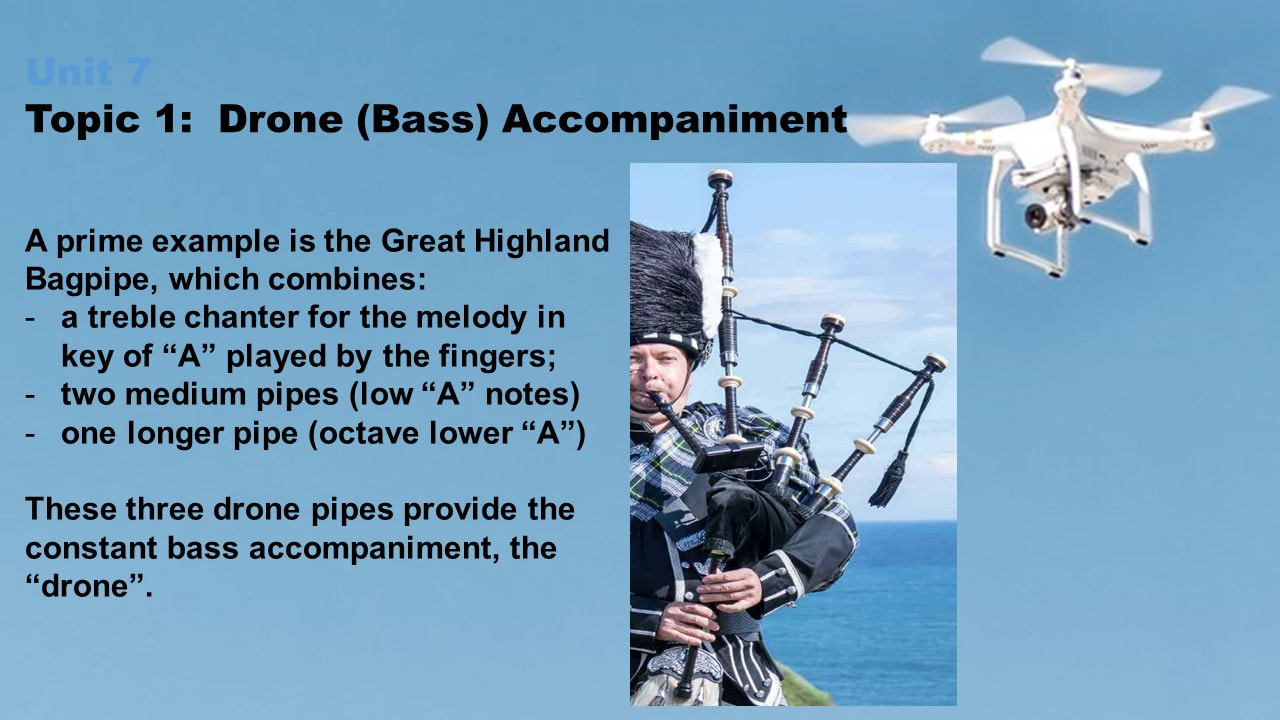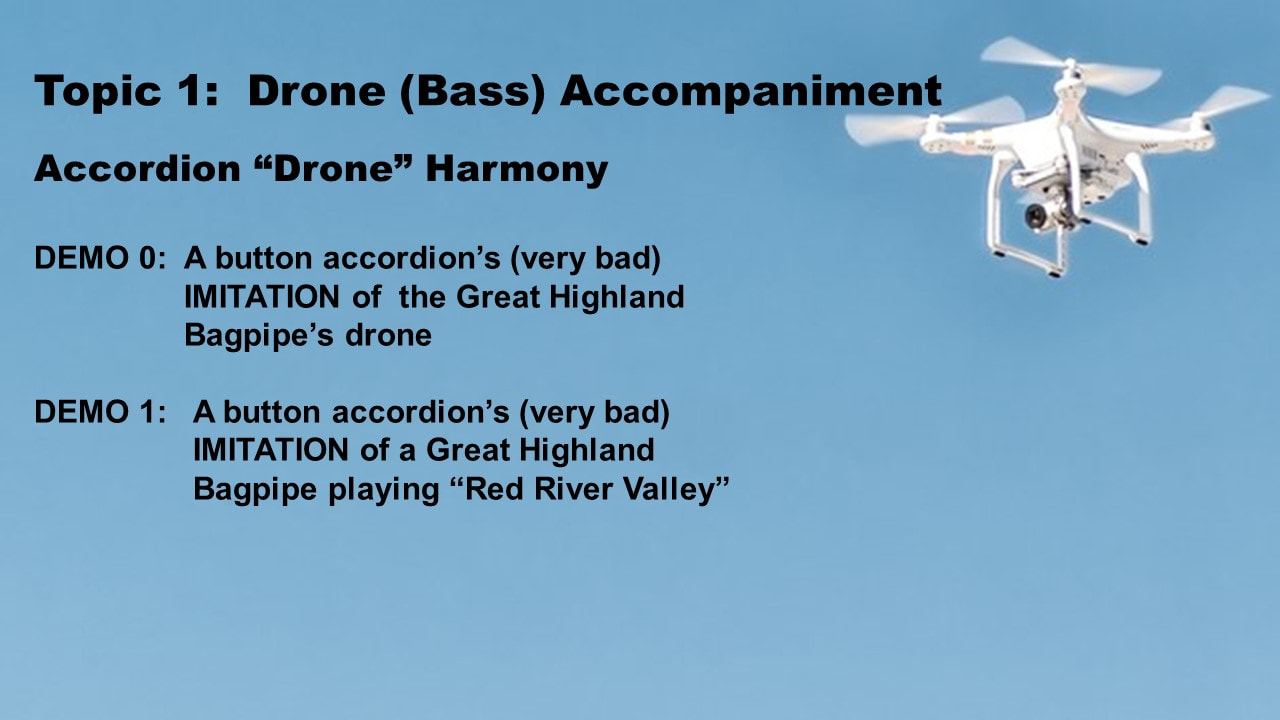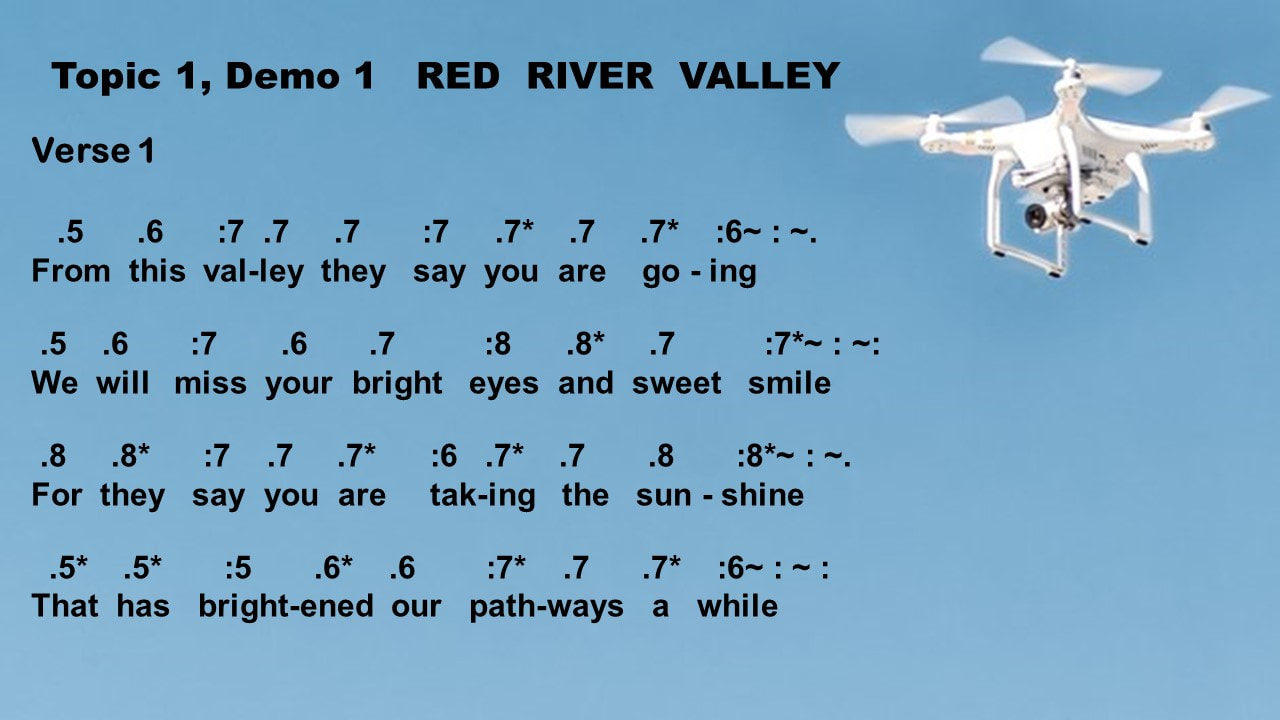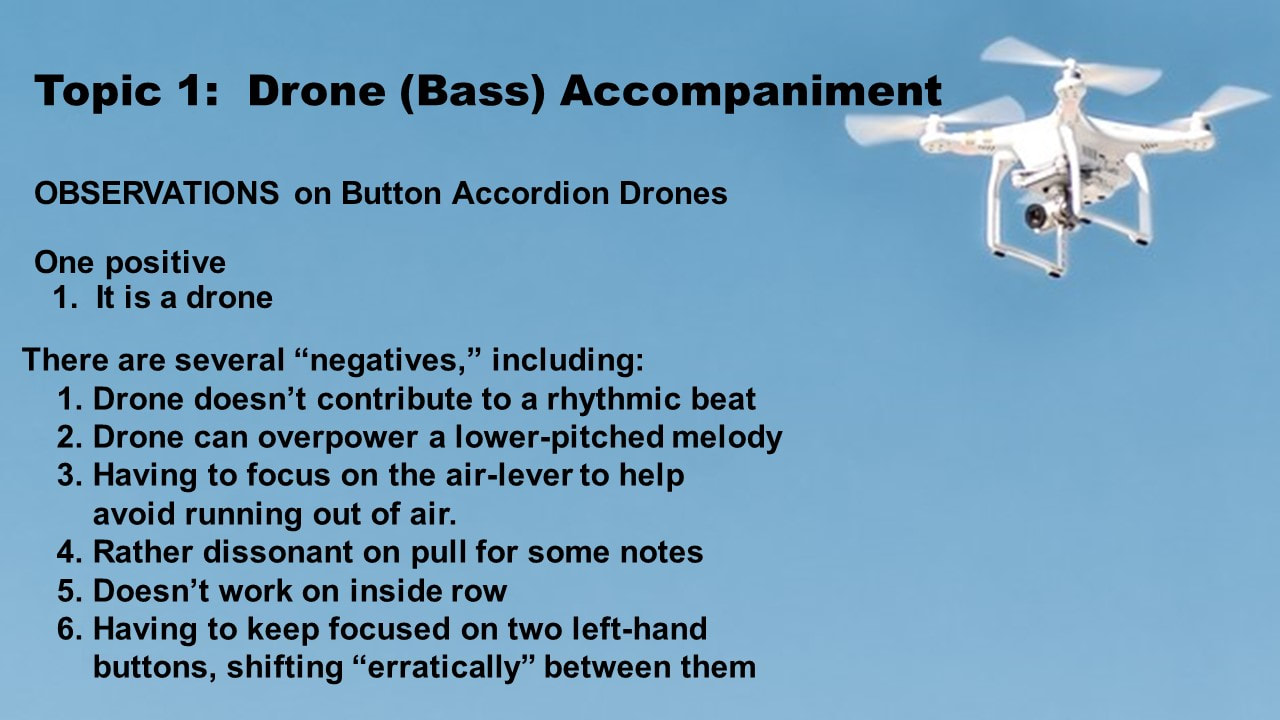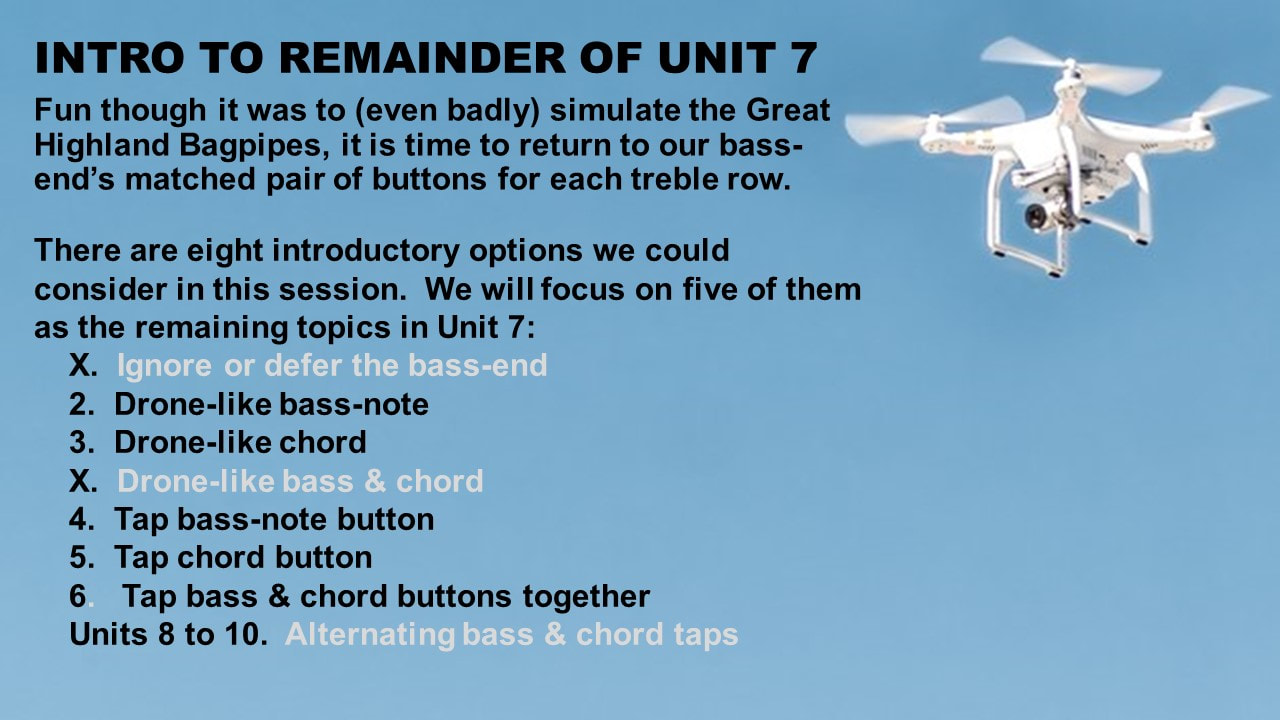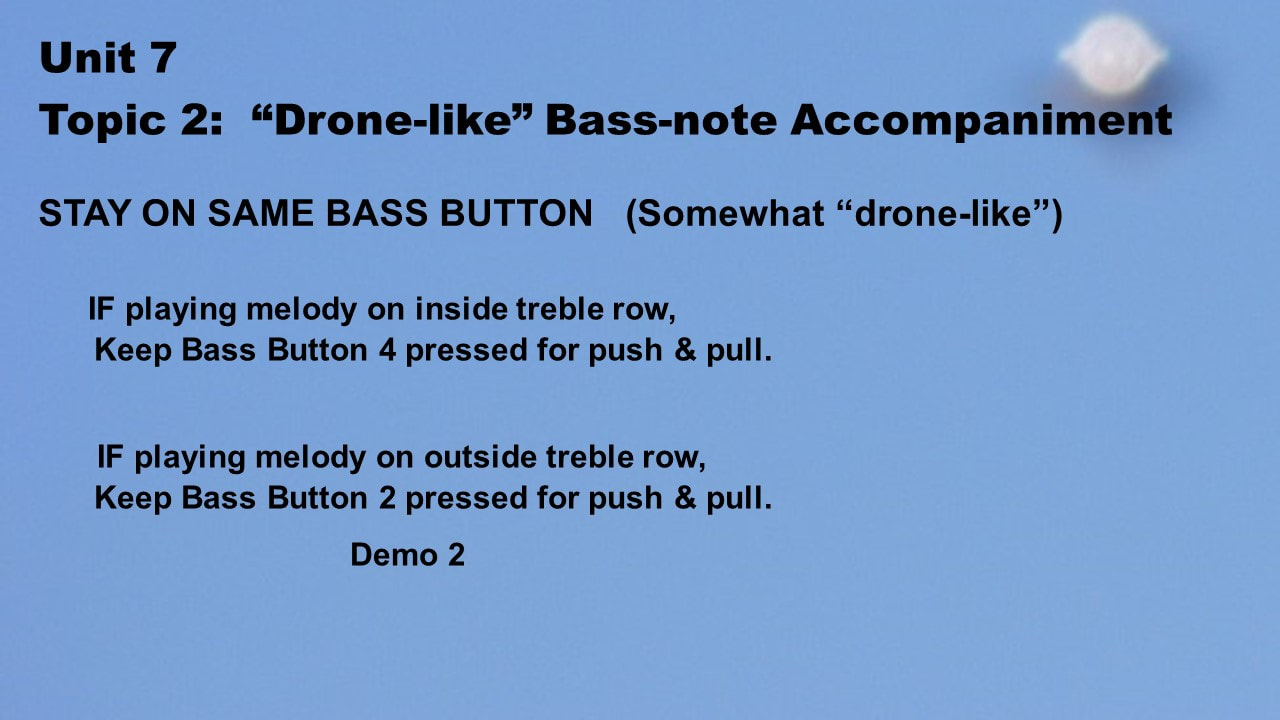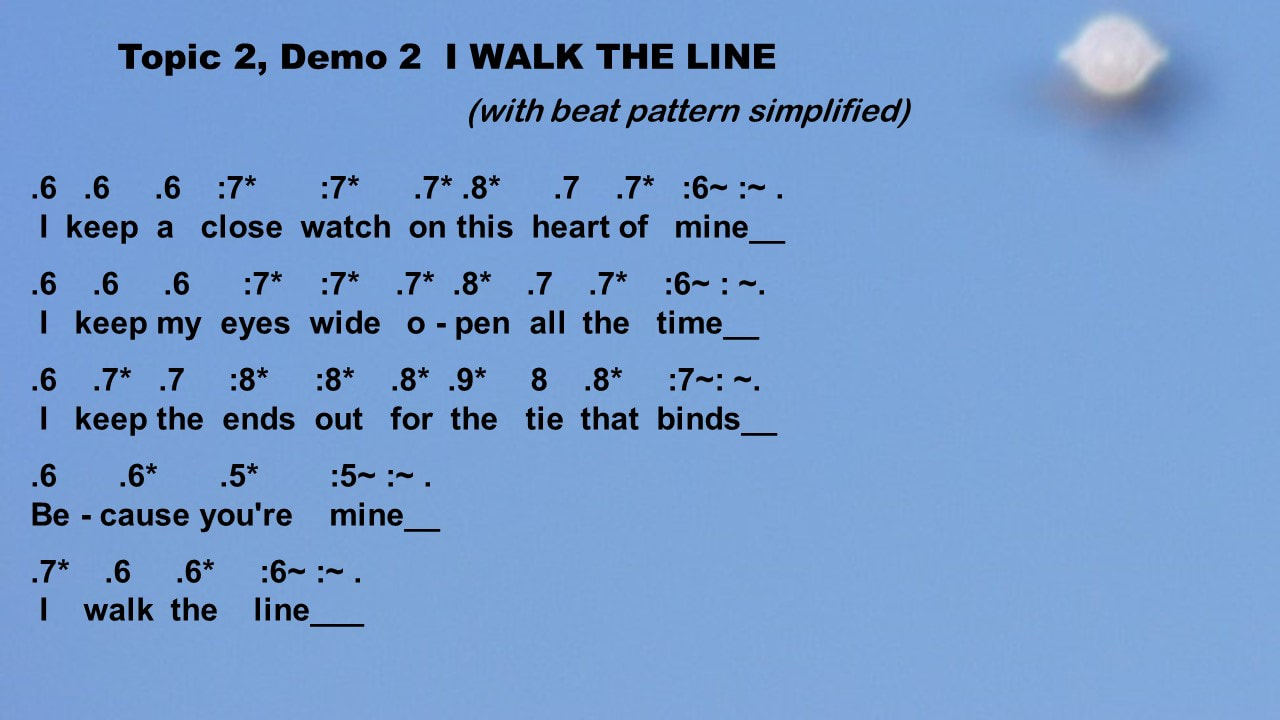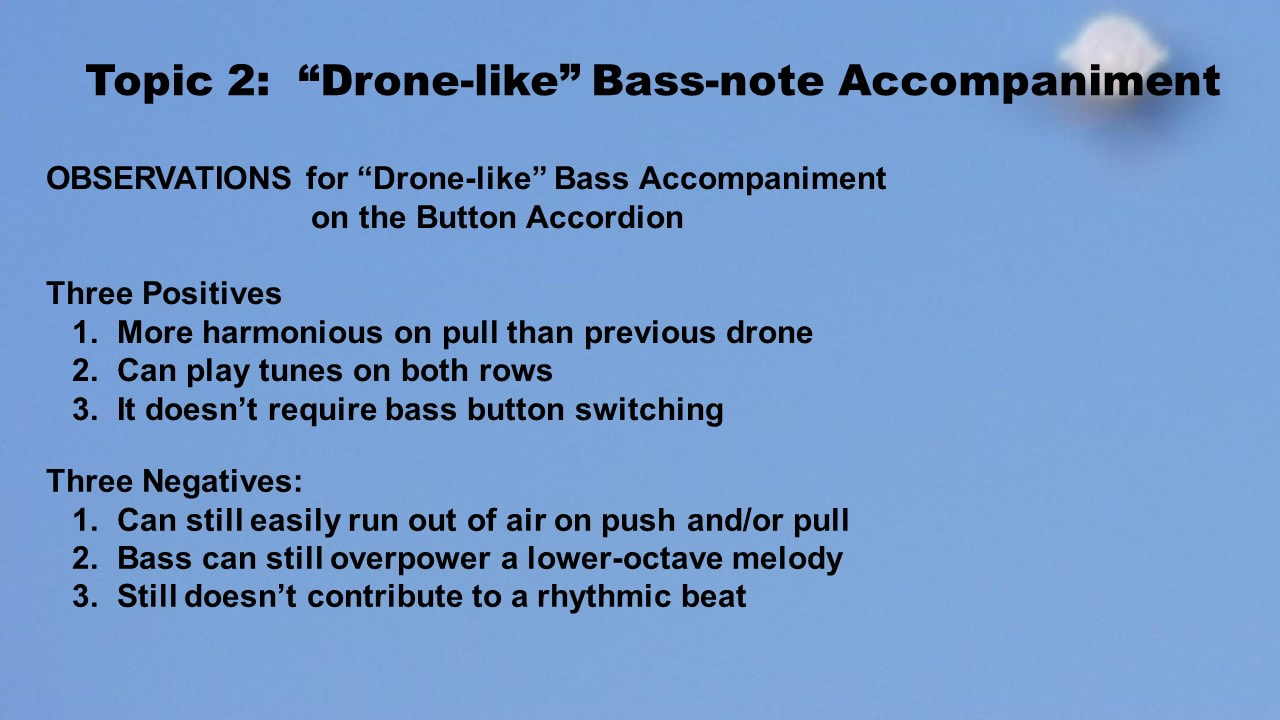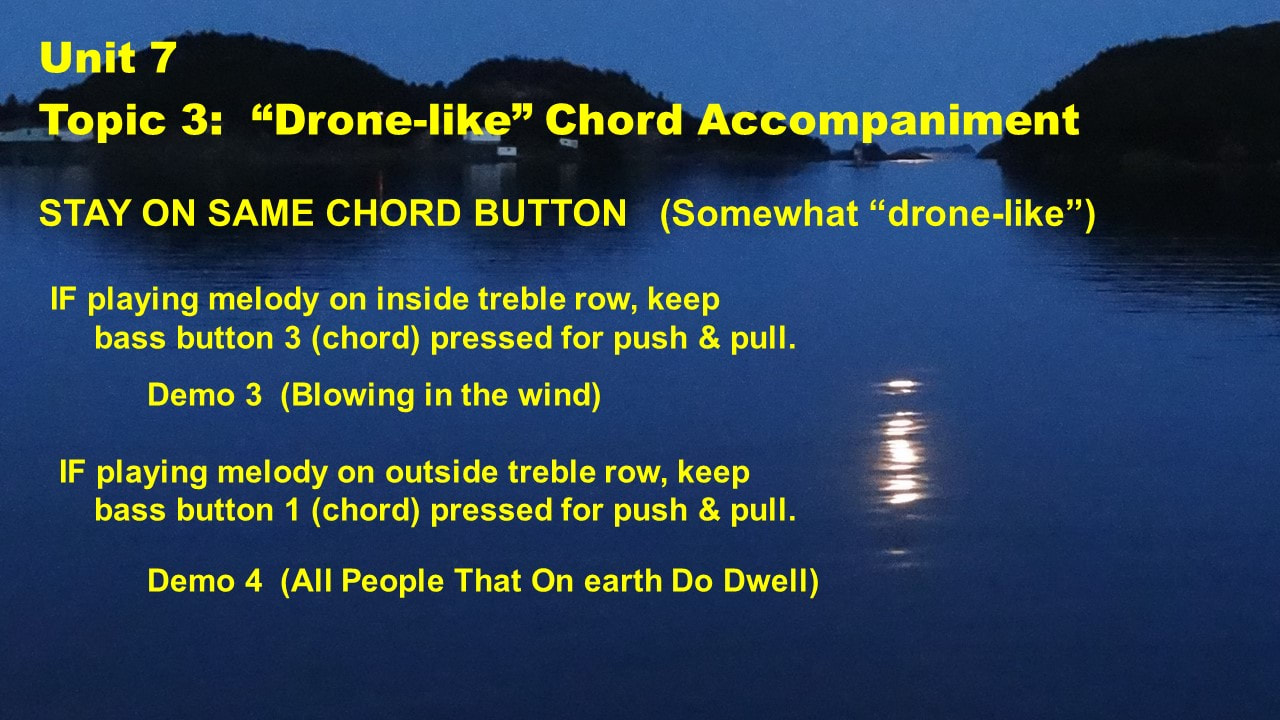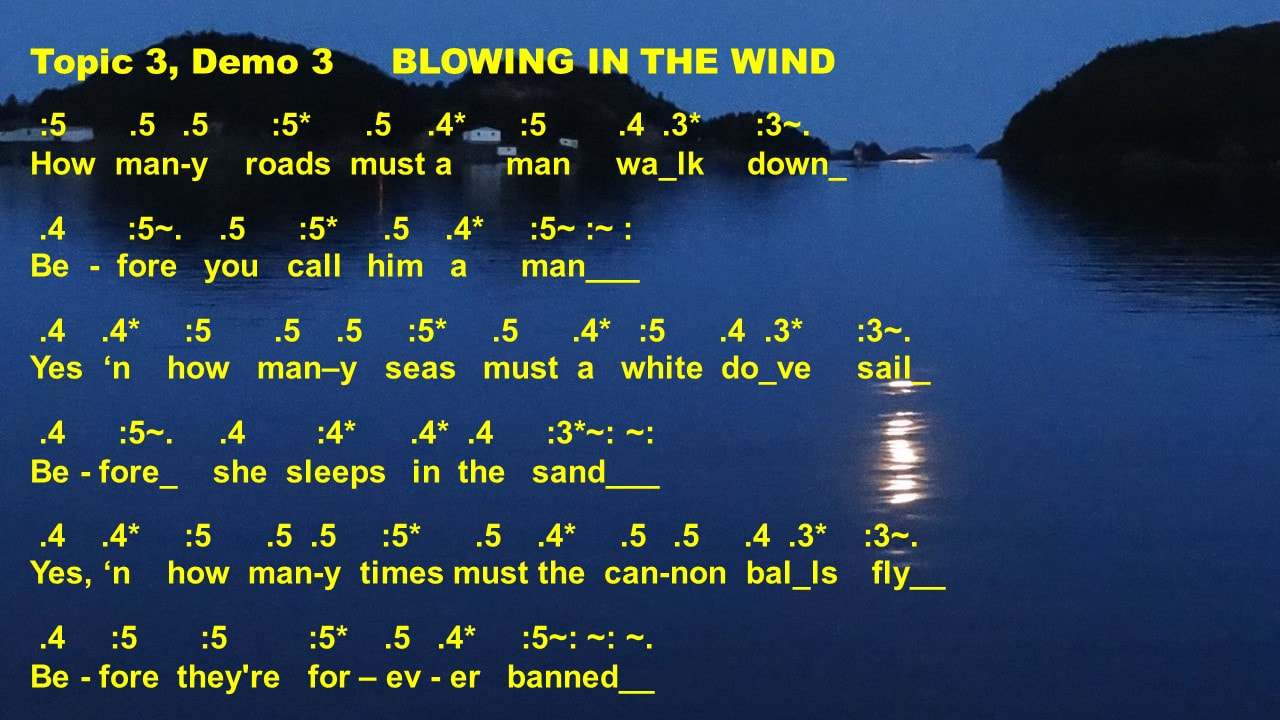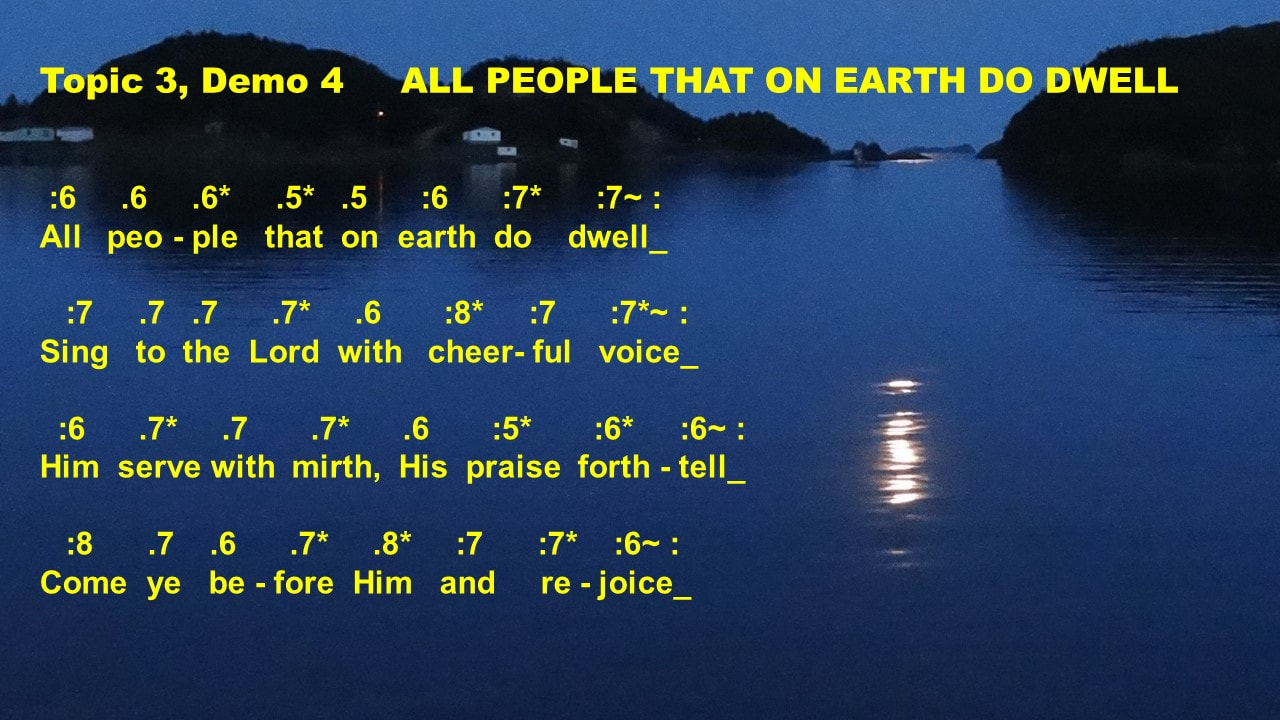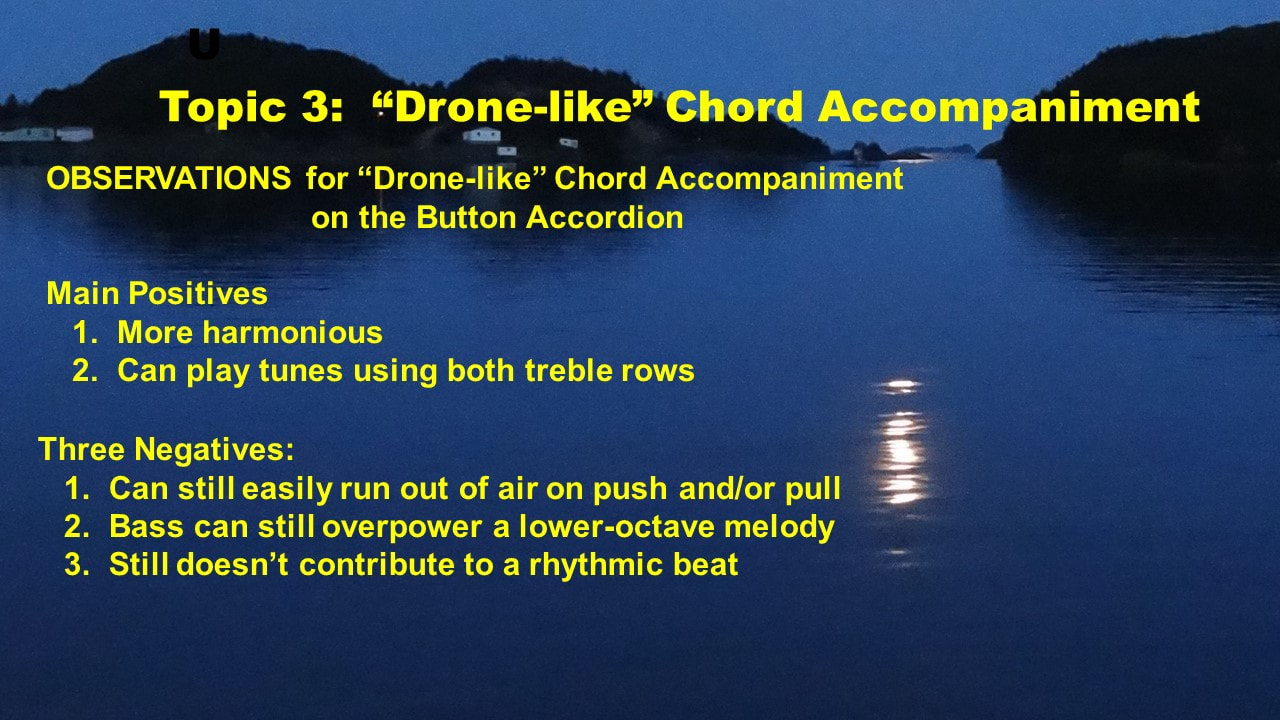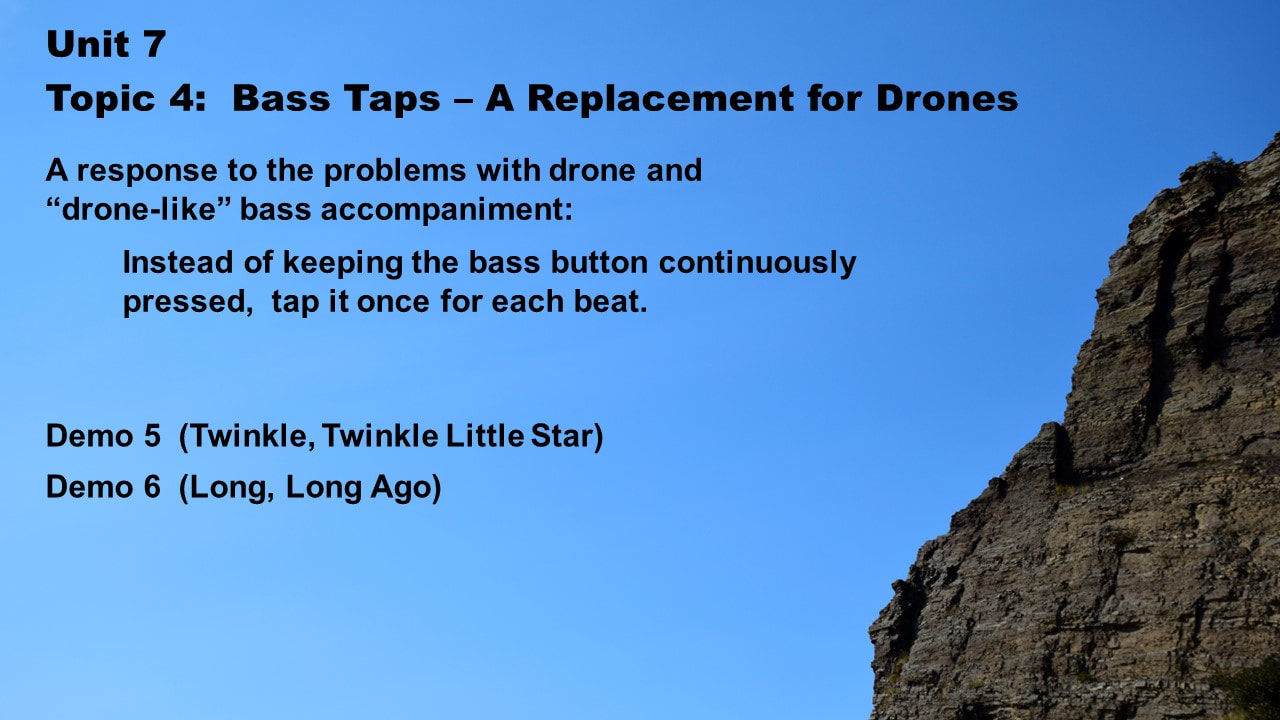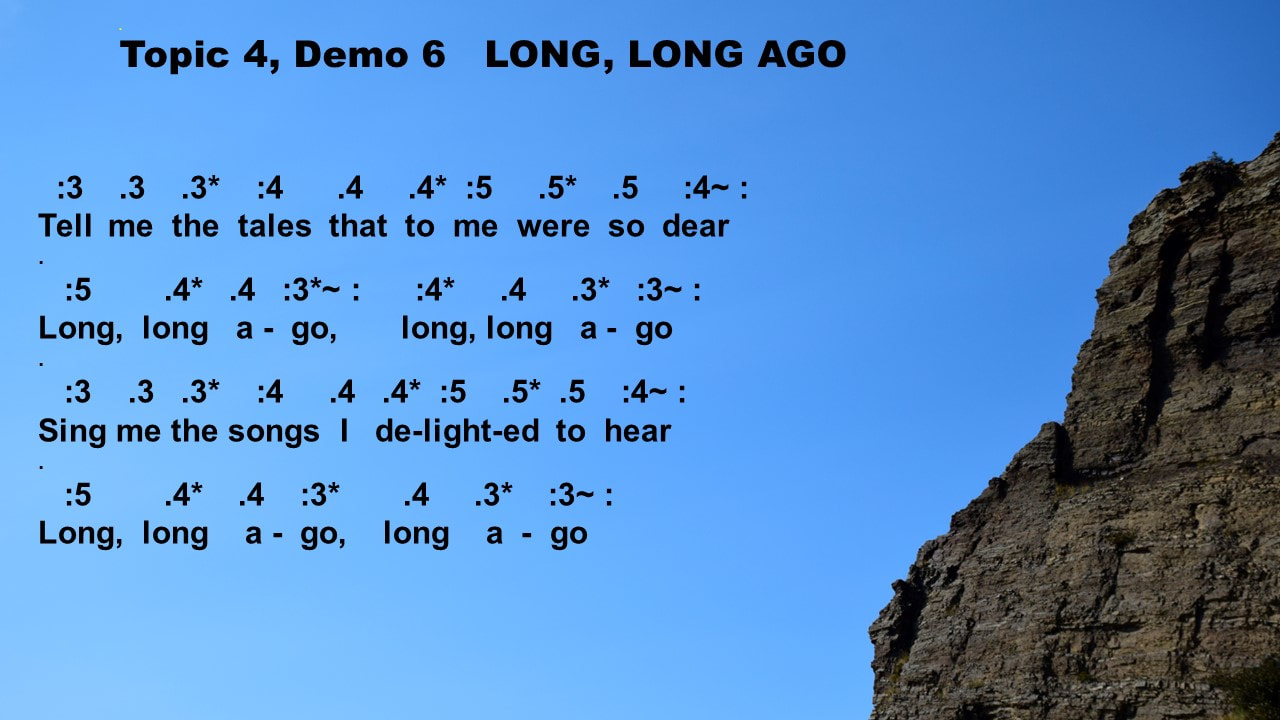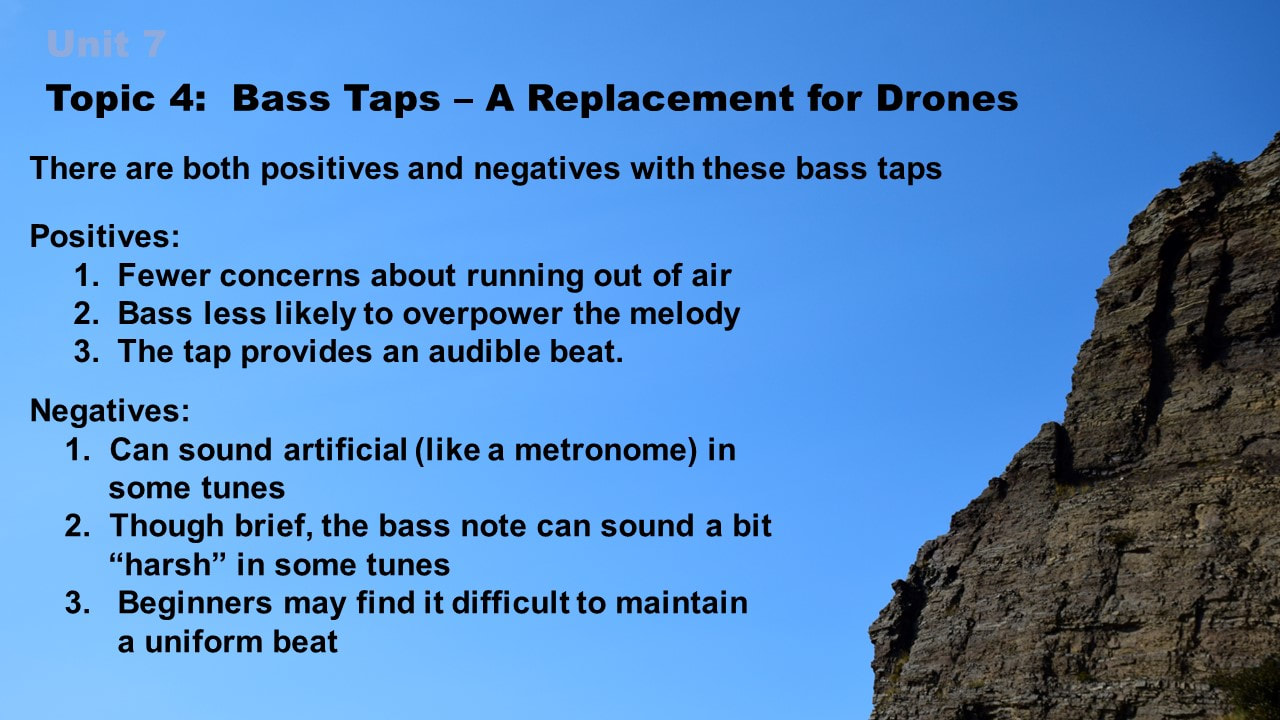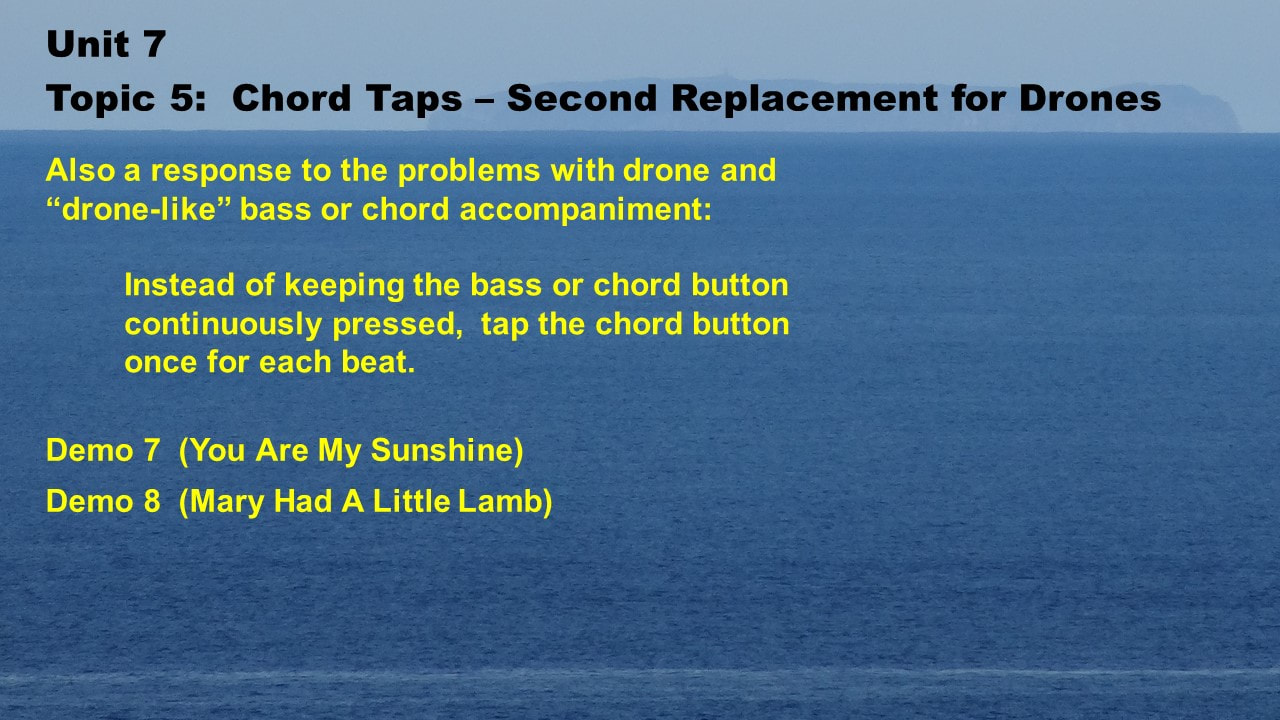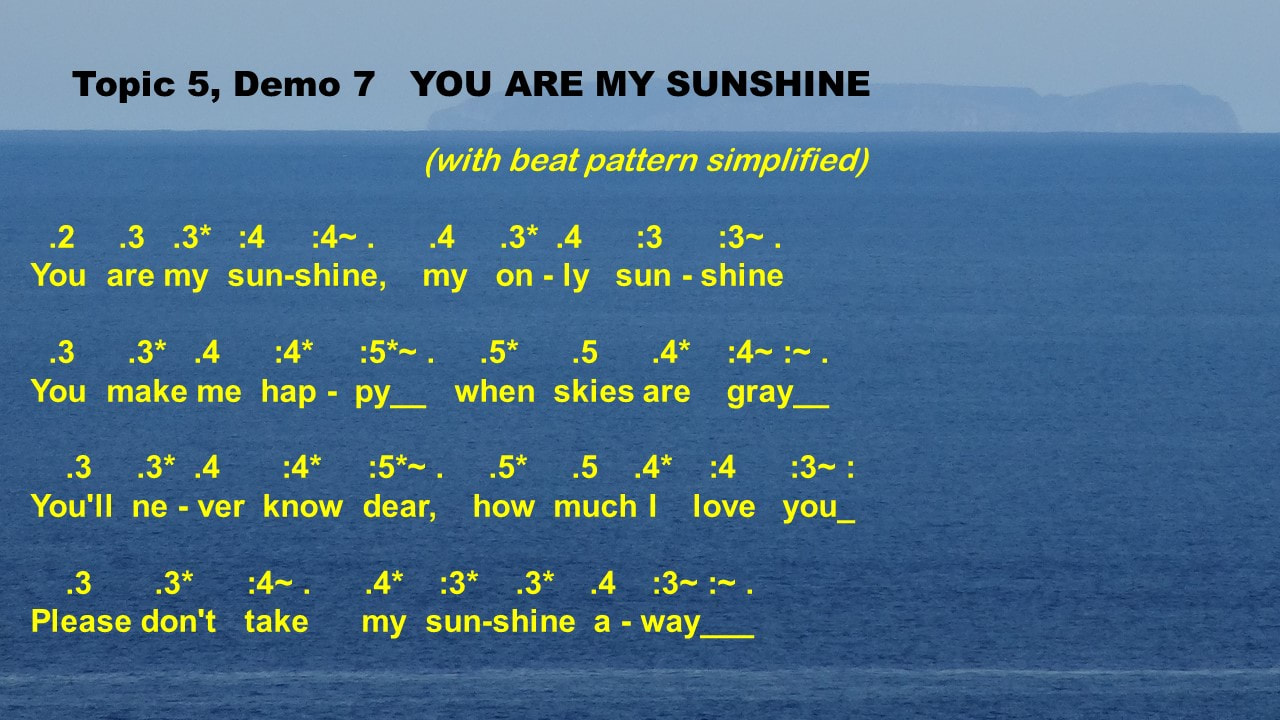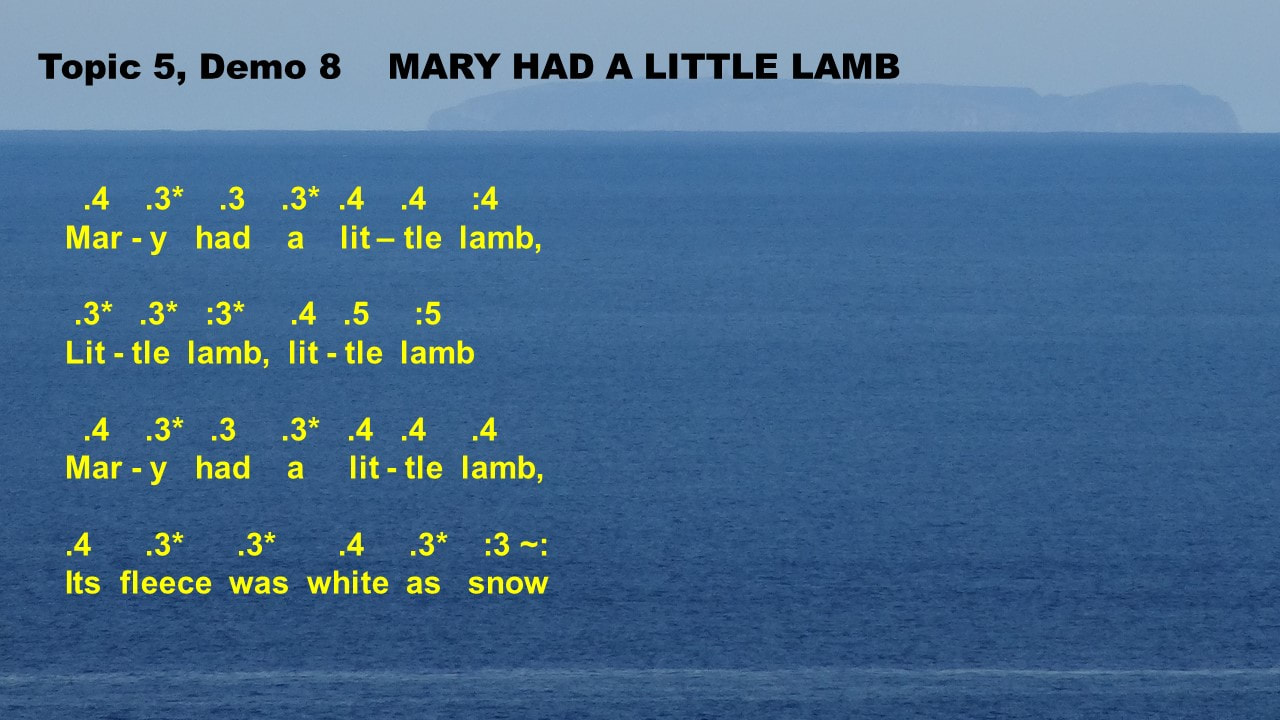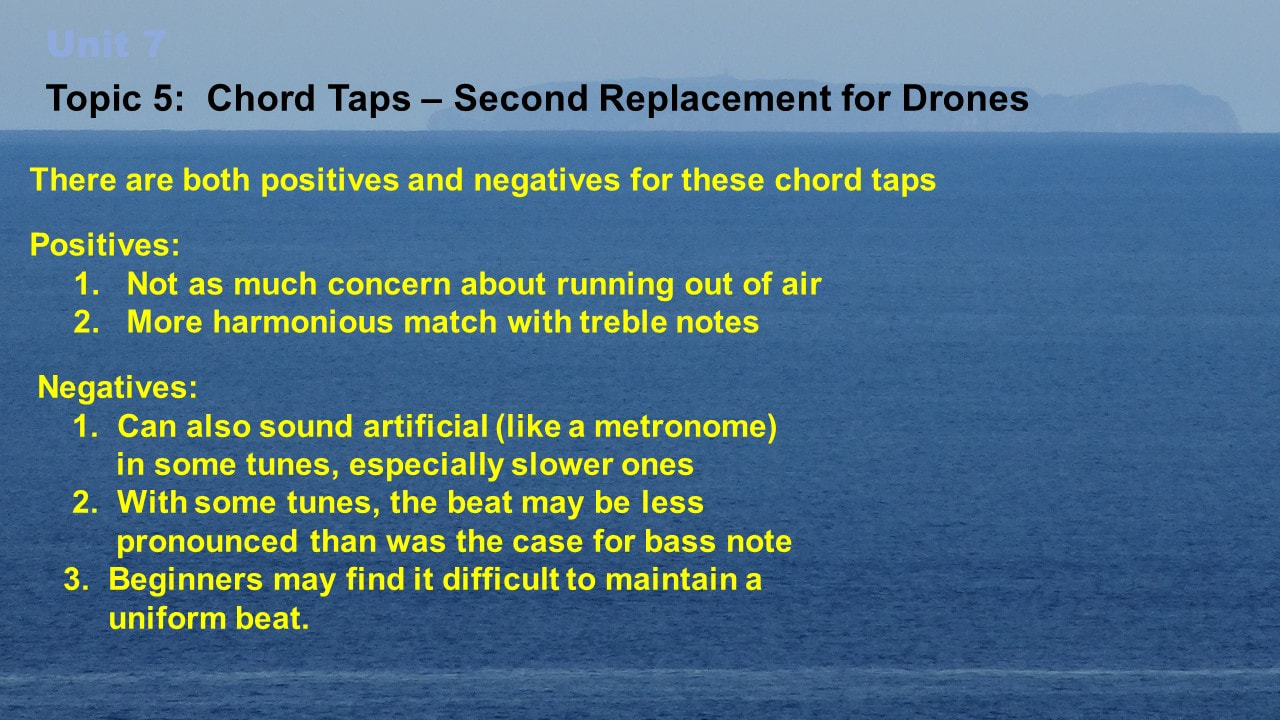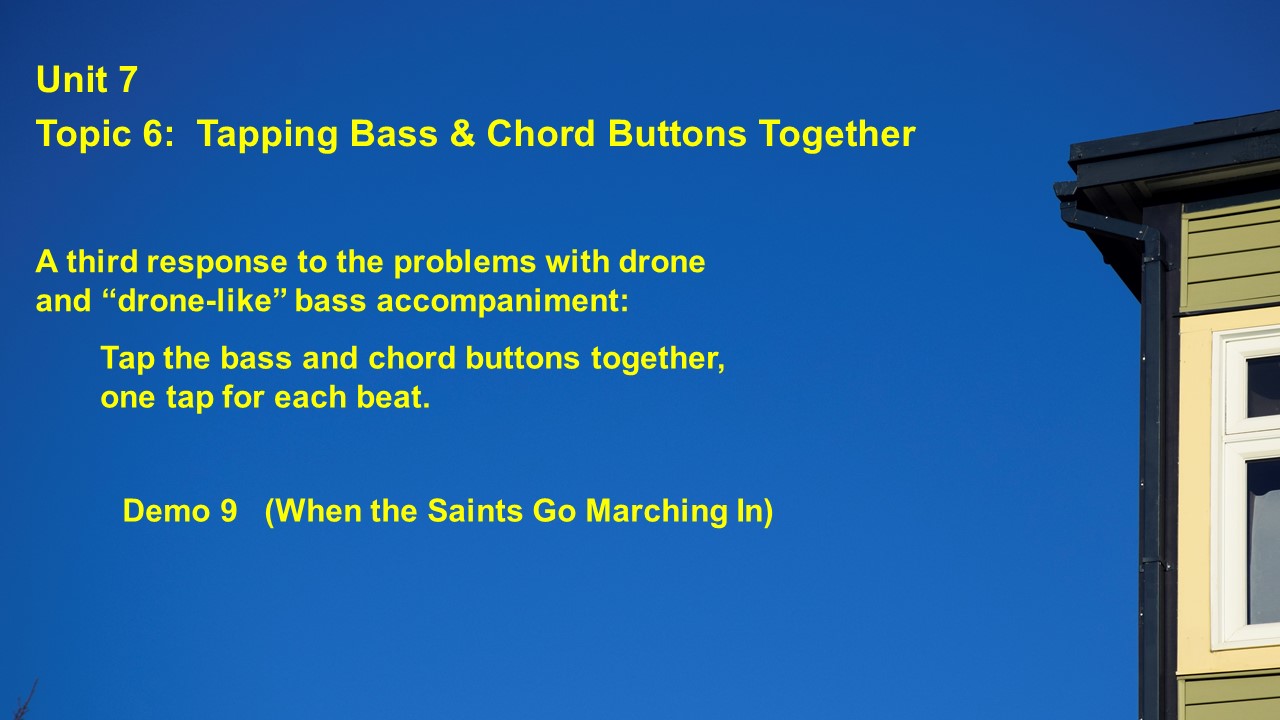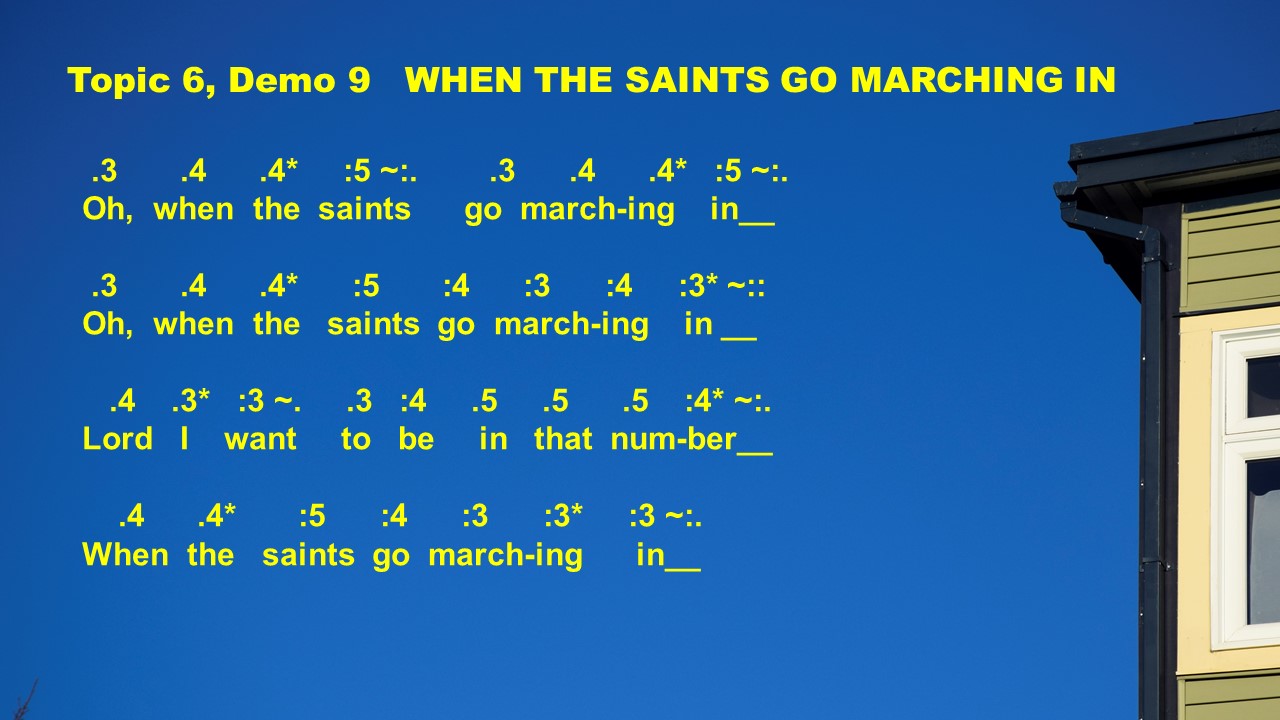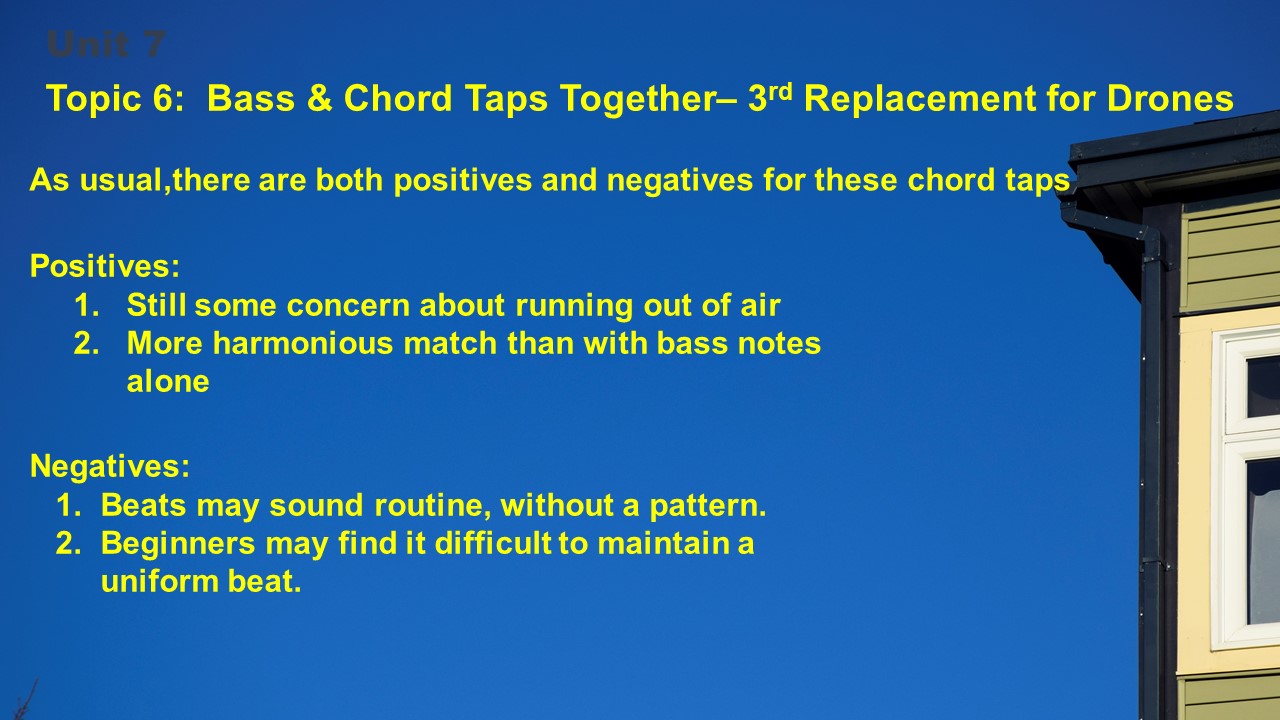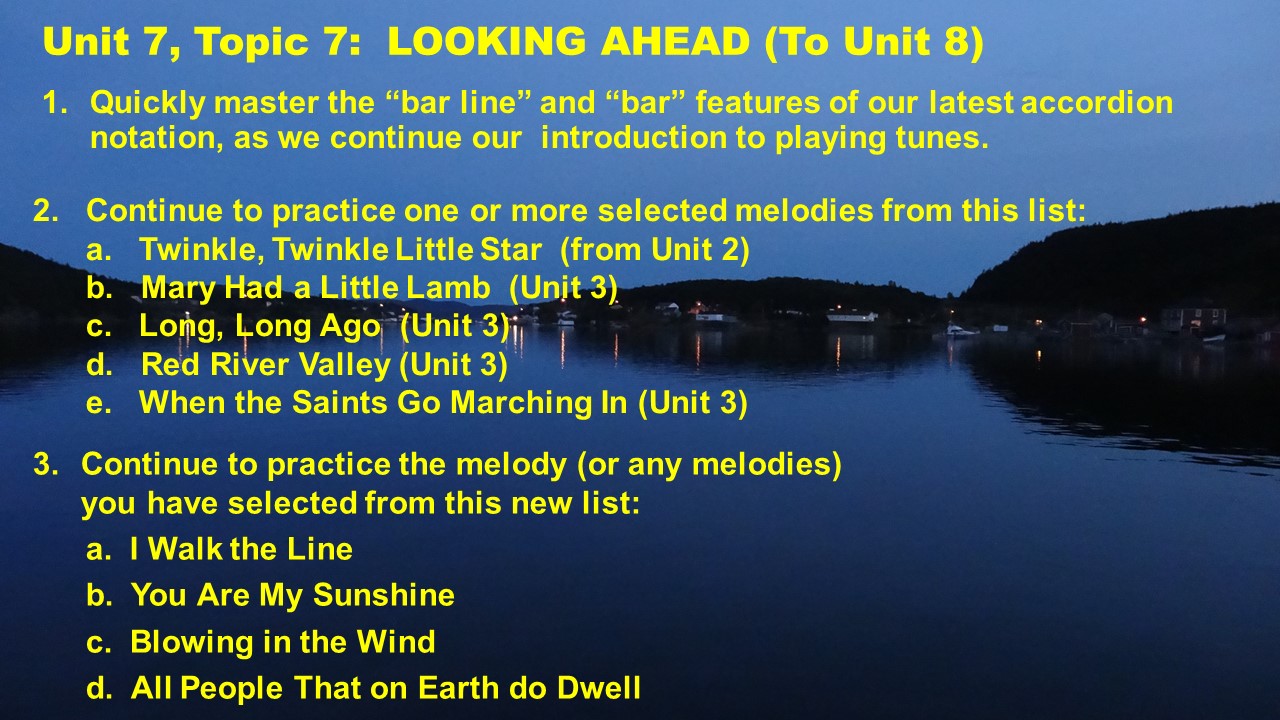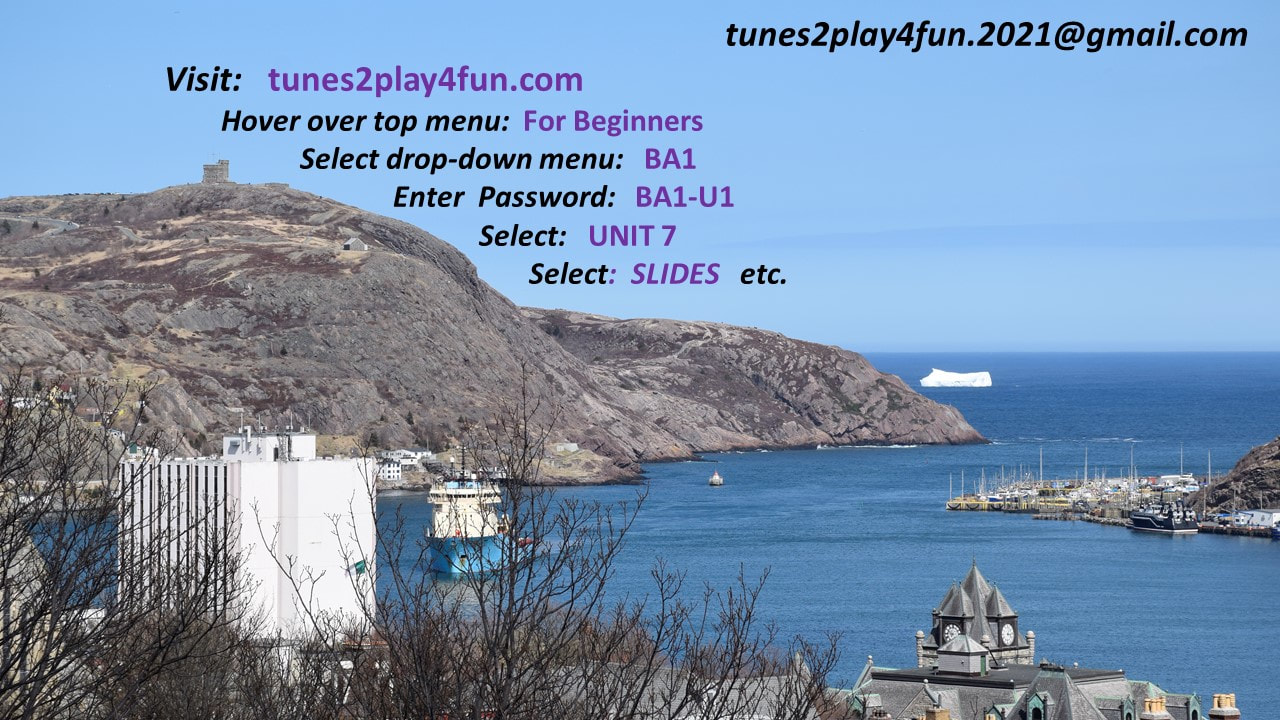Button-Accordion Project
(Dual-row G-C or A-D, with Accidentals)
Based on tunes2play4fun.com & Facilitated by ZOOM
MINI-COURSE BA1
The Button Accordion, its Music & Notation
UNIT SEVEN (of TEN)
Drone & Tap Introductions to Accordion Tunes
(Dual-row G-C or A-D, with Accidentals)
Based on tunes2play4fun.com & Facilitated by ZOOM
MINI-COURSE BA1
The Button Accordion, its Music & Notation
UNIT SEVEN (of TEN)
Drone & Tap Introductions to Accordion Tunes
SLIDES & COMMENTS
Slide 1 (Button Accordion One)
Slide 1 (Button Accordion One)
Slide 2 (List of units in the BA1 mini-course)
Slide 3 (List of Topics for Unit 7)
|
Topics 1 to 5 at left include demonstrations & practice using the five familiar and four "some-what" familiar song-melodies that were included in the previous Unit.
Click HERE for the Unit 6 web link that leads to the pages for these nine song-melodies. This link will open in a new window, to make it easier for you to return to Unit 7 and these slides. |
Slide 4 (Topic 0 - Prelude)
Slide 5 (Topic 0 - Prelude)
Slide 6 (Topic 1 - Drone (bass) accompaniment
Slide 7
Slide 8
|
And here is a prime example of one type of musical drone: the Scottish bagpipe (also known as a Great Highland Bagpipe, or GHB)
The drone contains the same bass notes ("low A" and an "octave-lower A"). The pipes & chanter are often claimed to be in the key of A (but the key is actually just slightly higher than Bb). While this drone note does not harmonize well with all the notes on the chanter, it works for the tunes that are frequently played on Scottish bagpipes. |
Slide 9 (Topic 0 - Accordion "drone" imitation)
|
On the dual-row button accordion, the same outside-row bass note is heard when button 2 is used on the push and button 4 on the pull, to create a drone.
On the push, this bass button note is highly consonant with buttons 2 to 11, but on the pull it is not very consonant with buttons 2*, 3*, 6*, 7*, 10* and 11*. |
Slide 10
Slides 11
Slide 12 - AN INTRODUCTION TO THE REMAINING TOPICS IN UNIT 7
Slide 13 - Topic 2: "Drone-like" Bass-note Accompaniment
Slide 14
Slide 15
Slide 16 (Topic 3 - Single button chord drone-like accompaniment)
Slide 16 (Topic 3 - Single button chord drone-like accompaniment)
Slide 17
|
Here we keep outside chord button 3 pressed, as we play the melody part on the inside treble row
My intention, in this BA1 mini-course for beginners, was to use melodies and tunes with one note per syllable. How-ever, in this song there are three syllables where there are two notes each: walk = wa_lk (line 1) dove = do_ve (line 3) balls = bal_ls (line 5) |
The underscore _ is used to show that the syllable is being stretched, turning it (in a way) into two syllables to match the two notes. The underscore is also commonly used at the end of syllables (as at the end of each line above) to indicate that the sung syllable is to held longer.
Slide 18
Slide 19 (Positives and negatives for this drone-like feature)
Slide 20 (Topic 4 - Bass Taps as a Replacement for Drones)
Slide 21
Slide 22
Slide 22
Slide 23
Slide 24 (Chord Taps - A Second Potential Replacement for Drones)
Slide 25
Slide 26
Slide 27
Slide 28 (Topic 6 - Tapping bass & chord buttons together)
Slide 29
Slide 30
Slide 31 (Topic 7 - Looking Ahead
Slide 32
